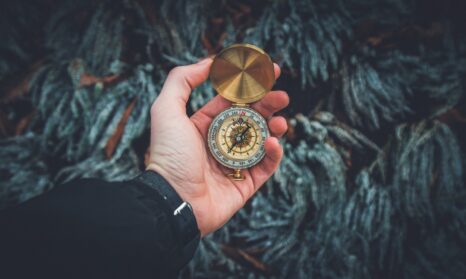Setting science-based targets for businesses - everything you need to know
In this Q&A with our Head of Sustainable Business Sian Cooke, we explore the ins and outs of setting science-based targets.
First things first, what is a science-based target?
A target is ‘science-based’ if it is in line with what the latest climate science says is necessary to prevent dangerous climate change and ecological breakdown. Until 2018, the aim was to limit global warming to below 2°C compared to pre-industrial times. But since the International Panel on Climate Change (IPCC) published its stark ‘Special Report’ last year, it’s considered by most to be vital to limit it to a 1.5°C increase. Temperatures have already increased by 1°C.
Carbon targets are not new. Visionary companies have been reporting on their emissions since the early 2000s, and carbon reporting became mandatory in the UK in 2012.
But these targets haven’t always been rooted in science. Previously companies may have set targets because they looked good or even rhymed, eg 20% by 2020. As well as trying to prevent runaway climate change, science-based targets also consider your company’s growth pathway and carbon predictions for your industry sector or GDP.
Bioregional has been championing rigorous targets based in science for more than 15 years through our One Planet Living framework. In 2007, we used this approach to help B&Q set the ground-breaking targets that formed its award-winning One Planet Home programme.
Any company or business can set a science-based target, following the different methodologies offered. Currently, larger companies are publicly disclosing their commitments and targets (once approved) via the Science-Based Targets initiative (SBTi).
This initiative, created in 2015, is a partnership between the Carbon Disclosure Project, the UN Global Compact, the World Resource Institute and WWF. It provides resources for companies that have committed to setting science-based targets, and independently assesses and approves the final targets once they are submitted.
What aspects of our business do we need to consider while setting science-based targets?
As demonstrated by the need for urgent action that was outlined in the 2018’s IPCC report, as well as growing public interest, setting science-based targets is the sensible course of action for any business that wants to avoid climate crisis and to be future proof.
As well as being rooted in science, these targets demand a more holistic approach to sustainability. Businesses will need to consider the impact of their direct fuel consumption and electricity use (defined by the Greenhouse Gas Protocol as scope 1 and 2 emissions), but also their indirect emissions from value chains and products (scope 3). This covers everything from employee commuting and cradle-to-gate emissions from the products or services you sell, to business travel by air.
For many businesses, scope 3 impacts account for most of their total footprint. If emissions from your scope 3 represent more than 40% of your total emissions, the SBTi requires you to set an ambitious target to reduce these emissions.
What’s the business case for setting science-based targets?
Besides having real environmental benefits for the wider world, setting science-based targets can also benefit your business by:
Saving money: Companies with science-based targets are reporting financial savings, driven by eg increased energy efficiency and onsite renewables.
Kingfisher, the global home improvement company, had its science-based targets approved by the SBTi in 2019. It’s been consistently investing in onsite renewables over the last 5 years and these are now generating 10 million kWh per year. This is roughly the annual electricity consumption of a large village1 and saves Kingfisher more than £1.1 million a year when combined with energy-efficiency savings.
Appealing to investors: Investors are increasingly looking at how companies are future-proofing their operations and managing risk, including climate-related risks. Many companies also report an increase in their credibility with investors, as well as a decrease in their climate-related risks eg extreme weather events, by adopting science-based targets.
Staying ahead of regulation: With growing scrutiny from the public and civil action from groups like Extinction Rebellion, governments are set to adopt more stringent policies and regulations on emissions and carbon reporting. Companies with science-based targets will be ahead of the game and considered leaders, better able to influence policymakers.
Which businesses are leading the way?
General Mills and Procter & Gamble were the first companies to have their targets approved by the SBTi in September 2015. Since then, many others have followed suit; in June 2019, the SBTi had approved targets for over 220 companies, and a further 341 companies have committed to setting science-based targets to limit global warming to well-below 2°C above pre-industrial levels and pursue efforts to limit warming to 1.5°C.
Some, including Tesco, BT and Carlsberg, have gone even further and set targets in line with a 1.5°C trajectory.
Examples of targets from well-known retailers include:
- M&S has committed to reduce its operational emissions (scope 1 and 2) by 80% by 2030 from a 2007 baseline. It has also pledged to reduce scope 3 emissions by 13.3 tonnes between 2017 and 2030.
- Kingfisher will reduce its operational footprint by 22% by 2025 (2016 baseline) and reduce emissions from purchased goods and services, including use of sold products, by 40% per £million turnover (2017 baseline).
- Pukka Herbs has committed to reduce absolute scope 1 & 2 emissions by 100%, and to reduce its scope 3 emissions by 50% per million units of products (both by 2030 from a 2017 baseline).
Do you think customers care if companies are setting science-based targets?
Let’s be honest, while an ever-increasing number of people want to buy products from purpose-led brands, many might not be overly excited about science-based targets - and may not even know what it means!
But people are interested in companies that offer innovative products and those that save them money. And if the recent wave of consumer action and awareness on plastic have shown us anything, people also want companies that take sustainability seriously.
Going through the process of setting science-based targets helps identify your main areas of impact, and then you can explore how best to communicate this in a way that will resonate with your customers.
For example, H&M uses stories and innovation about its products to attract customers. As part of its science-based targets, H&M Group pledged to reduce emissions from purchased raw materials, fabric and garment. Each year, it unveils its Conscious Exclusive Collection, which uses unconventional materials with a lower carbon footprint.
And through its Sustainable Home Product ranges, Kingfisher is tackling its scope 3 emissions as well as enabling customers to save energy, and therefore money. In 2018, these products and services helped its customers reduce their energy consumption by an estimated 43 TWh – more electricity than Hong Kong uses in a year!
Setting science-based targets is something any business serious about its future – and the future of the planet – is doing. Take a look at my follow-up blog which shares the nitty-gritty detail of how to set science-based targets as part of your sustainability strategy.
Learn more about how we work with businesses to set sustainability targets rooted in climate science.
1 Based on domestic energy use of Long Ashton, Bristol (population: 6,044)









